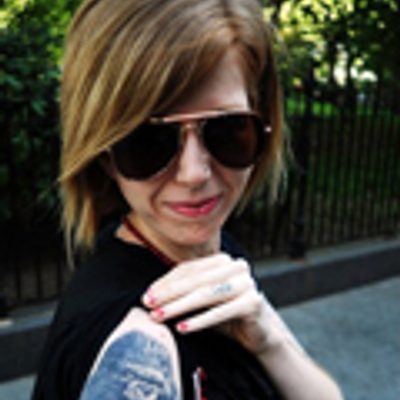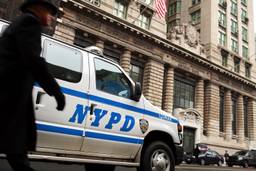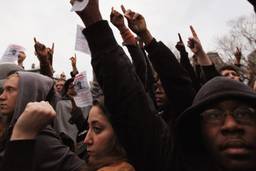In May 1969, a student named James Rector was gunned down by police near the People’s Park in Berkeley, California. At the time, Berkeley was the epicentre of many student demonstrations, including the rally that took place on May 15 for the purpose of discussing the Arab-Israeli conflict. Then-Governor Ronald Reagan had publicly chastised university administrators for allowing the demonstrations to take place at all, and on this day, known as “Bloody Thursday,” things reached a tipping point.
Around 3,000 people flooded Sproul Plaza near U.C. Berkeley before ASUC Student Body President Dan Siegel declared, “Let’s take the park!” What followed was a riot between protesters and police where activists opened a fire hydrant, and police countered with tear gas before protesters tried to tear down the park fence and heaved rocks and bottles at the police. It wasn’t long before, under the supervision of Reagan’s Chief of Staff Edwin Meese III, officers in full riot gear - complete with covered badges - charged into the crowd.
During the altercation, Alameda County Sheriff’s deputies used shotguns to fire at people sitting on the roof at the Telegraph Repertory Cinema, which is where police killed James Rector and permanently blinded a carpenter named Alan Blanchard.
All told, 128 Berkeley residents were admitted to local hospitals for serious injuries and 111 officers were injured, including one who was stabbed in the chest with a knife. Reagan declared a state of emergency in Berkeley and sent in 2,700 National Guard troops, yet the unrest continued. For weeks, the police used tear gas on demonstrators attempting to meet in public, and according to one report in the Berkeley Daily Gazette, some police were caught removing their badges and donning Halloween pig face masks to disguise themselves in order to attack citizens they found in the park annex.
When asked about his handling of the situation, Reagan defended his decision to use the National Guard. “If it takes a bloodbath, let’s get it over with. No more appeasement,” he said.
A few weeks later, the Ohio National Guard killed four students and seriously wounded nine more at Kent State University.
Minus the gunfire, all of the above police actions should sound familiar to anyone following the Occupy movements. Police have used tear gas on demonstrators, covered their badges to avoid accountability, and bullied, beaten, and harassed protesters. Until recently, these kinds of violent confrontations between students and police seemed like conflict isolated in the pages of history books, although if yesterday’s police actions are any indication of things to come, the 1960-style riots may very much be back in vogue.
A violent clash between protesters and police occurred at the Occupy Cal camp Wednesday when demonstrators linked arms while facing down lines of officers dressed in full riot gear. Protesters were warned that the camp was illegal until police advanced on the activists, violently shoving and beating them before arresting at least seven people, including English professor Celeste Langan.
“Stop beating students,” the crowd chanted as officers subdued several people.
“He’s breaking my wrists,” a man shouted before the police officer arresting him cut off his cries with a chokehold.
These demonstrations occurred just 4.5 miles away from Occupy Oakland, the site of more violent police suppression.
Meanwhile, in the shadow of John Harvard’s statue, students laid claim to Harvard Yard in the name of the national Occupy movement. As the evening progressed, more than 200 students linked arms in order to guard their campsite.
At one point, police attempted to detain a demonstrator named Jeff Bridges, who shouted, “I’m a student!”
Bridges, a third-year divinity student, said he had pushed his way in, waving his ID. ‘‘I think what they’re doing is wrong and immoral, and as a divinity student I should know,’’ he said. Police allowed him to stay inside.
Last week, Occupy Harvard staged a 70-person walkout of a popular economics class and a march past the Harvard Club, ending at Occupy Boston.
Spreading unrest among young, college-age students shouldn’t come as a surprise to anyone who has been paying the least amount of attention to the nation’s economic woes. With astronomical youth unemployment and ballooning student debt, it’s no wonder young people everywhere are on the verge of rioting.
The problem is so glaringly obvious that the GOP presidential pool was forced to talk about student debt last night during the debates. Of course, the usual victim-blaming occurred, but the very fact that the GOP was forced to acknowledge that, yes, national student loan debt has hit $1 trillion speaks to how severe the problem actually is.
If CNBC is asking the GOP about Occupy Wall Street, it means the group has been extremely successful it getting its message into the ether and the ruling elite are left shaking in their boots.




